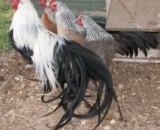Subtotal: $1,122.98
“Baby Ceram Asian Box Turtle” has been added to your cart. View cart
“T Negative Albino Blood Python” has been added to your cart. View cart
“Caring for a Spotted Turtle” has been added to your cart. View cart
“Eastern Painted Turtle” has been added to your cart. View cart
Japanese Bantams
$35.00
Minimum Order Quantity 2
Category: Bantams
Tags: baby japanese bantam, barred japanese bantam, black japanese bantam, black japanese bantam chick, black japanese bantam chickens, black japanese bantam hen, black tailed buff japanese bantam, black tailed japanese bantam, black tailed japanese bantam chickens, black tailed white japanese bantam, black tailed white japanese bantam chicken, blue japanese bantam, can a japanese bantam chickens sevvie in winter, gray japanese bantam, grey japanese bantam, how much time does it take for japanese bantam eggs to hatch, how should i price my japanese bantam chicks, japanese bantam, japanese bantam breeders association, japanese bantam characteristics, japanese bantam chick, japanese bantam chicken, japanese bantam chickens, japanese bantam chickens for sale, japanese bantam chicks, japanese bantam chicks for sale, japanese bantam colors, japanese bantam colours, japanese bantam egg size, japanese bantam eggs, japanese bantam facts, japanese bantam fight, japanese bantam hen, japanese bantam hens, japanese bantam origin, japanese bantam pullets, japanese bantam recognized variety, japanese bantam recognized variety barred, japanese bantam recognized variety birchen, japanese bantam rooster, japanese bantam rooster for sale, japanese bantam size, japanese bantam standard of perfection, japanese bantam temperament, japanese bantam vs serama, japanese birchen bantam chicks, japanese silky bantam, lavender japanese bantam, mottled japanese bantam, red japanese bantam, us wheaten japanese bantam, what do japanese bantam roosters look like at 2 months, what do japanese bantam roosters look like at 6 weeks, white japanese bantam chickens, why are japanese bantam chickens good to have











Customer reviews
Reviews
There are no reviews yet.
Write a customer review